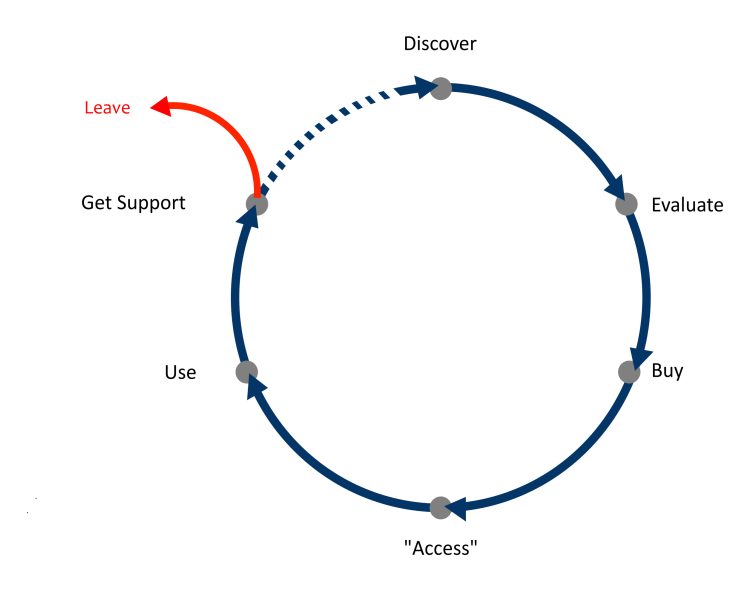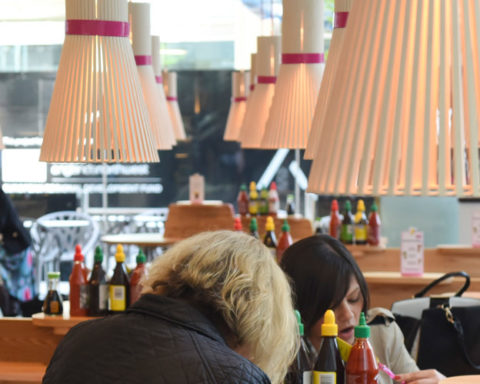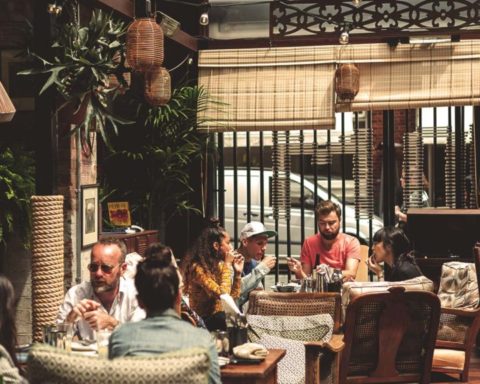The stage of access of the customer journey is fundamental since it reconfirms the decision taken during the moment of purchase
 Formerly, we spent some time describing the difference between Customer Experience and Shopping Experience (read here). The need raised from the fact that, usually, the first is “reduced” to the second. Even if it is flawlessly designed, even if it is exciting, the Shopping Experience is still a part of a longer and more articulated journey that the customer undertakes during the interaction and relationship with a company or a brand (as you see in the exhibit).
Formerly, we spent some time describing the difference between Customer Experience and Shopping Experience (read here). The need raised from the fact that, usually, the first is “reduced” to the second. Even if it is flawlessly designed, even if it is exciting, the Shopping Experience is still a part of a longer and more articulated journey that the customer undertakes during the interaction and relationship with a company or a brand (as you see in the exhibit).
This journey starts before the actual purchase of the product / service, when the customer “discovers” and “evaluates” the brand, continues at the moment the client decides to purchase the product, till the end, indeed, of the shopping stage. The journey is extended even after the purchase, since the customer is going to take possession of the product (access) and use it. The client will come back to the brand asking for assistance if anything went wrong during the previous stages.
It’s exactly this stage of “access” of the customer journey that we would like to describe today. That extremely complex and mysterious phase in which the client, finally, takes possession of his purchase.
 We have recently described also the “Opening Experience”, underlining how the packaging of a product, stepping in between the client and the purchase, influences the experience creating expectations. We are dealing with a touchpoint that the customer faces during the shopping experience: the product might be a fragrance “enclosed” in a nice shopping box that conveys the “first impression” on the promises of the brand. When you shop a fragrance, usually, it’s not only the olfactory experience that wins, but also the visual experience: how many times you stopped, looking at a perfume, attracted by the glass bottle that stimulated your imagination even before you smelled the fragrance?
We have recently described also the “Opening Experience”, underlining how the packaging of a product, stepping in between the client and the purchase, influences the experience creating expectations. We are dealing with a touchpoint that the customer faces during the shopping experience: the product might be a fragrance “enclosed” in a nice shopping box that conveys the “first impression” on the promises of the brand. When you shop a fragrance, usually, it’s not only the olfactory experience that wins, but also the visual experience: how many times you stopped, looking at a perfume, attracted by the glass bottle that stimulated your imagination even before you smelled the fragrance?
However, the packaging influences also the next stage of the customer journey, the one, indeed, of access. Imagine you have just received your last Apple device purchased online. Even more, in your case, it’s the first time you touch “your” IPhone. Of course, you have seen many smartphones at the Apple Store or in the hands of your friends. However, the one just delivered is yours. Also in this case, the packaging is a great part of the experience. Apple knows this very well, the company has developed a department dedicated exclusively to the design of the packaging.
There are many products and services, especially the one specifically related with the identify of a person, such as perfumes, clothes and accessories, furnitures, a cut at the hairstylist, that, after the shopping stage, make the access stage a sort of reconfirmation of the purchase.
Who has never experienced, after the purchase of a beautiful pair of shoes, the desire to walk on the shopping street and admire other models displayed behind the shop windows? Or, once home, to look online for a lower price? Even after the pair of shoes is purchased, the client is subject to a reverification and a reconfirmation of her own choice.
Or for a new haircut: under the shining lights and the perfect mirrors of the hairstylist, after his expert hands have professionally shorten here and colored there, you feel really perfect. However, once you go back at home and you look to “your” mirror, the one that every morning seems to exaggerate every imperfection of your bodies, are you still that certain?
 Same thing for a beautiful dress, purchased impulsively, attracted by the perfect experience lived in the store. Once you go back at home, you try the item, this is the very moment in which you take possession of the product. This is the very moment in which we decide, alone in front of our mirror, far away from inappropriate eyes, if that dress is the right one, if all goes well, if the experience lived in the dressing room is real.
Same thing for a beautiful dress, purchased impulsively, attracted by the perfect experience lived in the store. Once you go back at home, you try the item, this is the very moment in which you take possession of the product. This is the very moment in which we decide, alone in front of our mirror, far away from inappropriate eyes, if that dress is the right one, if all goes well, if the experience lived in the dressing room is real.
This is a “transition” phase between the “shopping” stage and the “usage” stage of the customer journey. This is the litmus test that definitely confirms whether the purchase is the right one and you don’t need to return it.
This is a stage, as anticipated before, extremely mysterious, since the company and the brand are hardly able to trace and identify the experience that the customer really lives.
What is the solution? Definitely try, as far as possible, to be vigilant and detect all touchpoints involved somehow with this stage: the staff at the store, the customer service, the packaging, the instructions to set up the device or assemble the furnitures and the logistics. They are all small blocks that contribute to collect information on how the purchase really went, whether it was finalized in our flagship store, online or offline.






